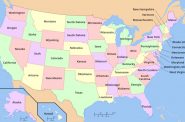Was Gov. Evers 402 Year Proposal Legal?
Gov. Walker went even further. Why the high court upheld Evers.
The news that the Wisconsin Supreme Court voted to uphold Governor Tony Evers’ use of his partial veto power to create a requirement that the Wisconsin school revenue limit be increased $325 per pupil every year for the next 402 years has drawn attention nationally. The story has been covered in The New York Times, the Washington Post, the Wall Street Journal and many others.
[inarticled]The controversial court case was called Lemieux v. Evers, and involved one set of vetoes made by the governor.
In every two-year budget cycle, Wisconsin sets a revenue limit on how much schools can spend based on the total of local property tax and state financial aid. As the budget bill came from the state Legislature to the Governor, here is what it said about raising the school revenue limit:
For the limit for the 2023-24 school year and the 2024-25 school year add $325 …
Following a series of vetoes by the governor, by eliminating words and numbers, here is how these provisions read:
For the limit for 2023-2425, add $325 …
Get a daily rundown of the Milwaukee stories
In other words, Evers extended the $325 increase for another 400 years. Can he do this? And if he can, what is the ultimate effect?
As written, the text of the court’s decision consists of three sections:
- The twelve-page majority opinion written by Justice Jill Karofsky, and joined by Justices Ann Walsh Bradley, Janet Protasiewicz, and (except for one section) Rebecca F. Dallet.
- A four-page concurrence from Justice Dallet, agreeing that the veto was okay but using different analysis to arrive at this point, and
- A twenty-page dissent from Justice Brian Hagedorn, joined by Chief Justice Annette Ziegler and Justice Rebecca Bradley.
The majority decision concluded that:
Using his partial veto authority, the governor expanded the provision from two fiscal years to 402 fiscal years by striking words and digits from the bill.
Article V paragraph 10 of Wisconsin’s Constitution both authorizes the partial veto of appropriation bills and places a restriction on them. Here is the relevant language:
(b) If the governor approves and signs the bill, the bill shall become law. Appropriation bills may be approved in whole or in part by the governor, and the part approved shall become law.
(c) In approving an appropriation bill in part, the governor may not create a new word by rejecting individual letters in the words of the enrolled bill, and may not create a new sentence by combining parts of 2 or more sentences of the enrolled bill.
Evers’ vetoes pass this test.
The majority opinion lists three additional principles for partial vetoes based on past court decisions in previous cases:
- The remaining text of the bill constitutes a “complete, entire, and workable law.”
- The vetoes can be made only on parts of bills containing appropriations.
- The vetoes may not result in a law that is “totally new, unrelated or non-germane” to the original bill.
Finding that the governor’s vetoes satisfied all these requirements, the majority reported that “we conclude that those 2023 partial vetoes do not violate the constitution.”
Justice Hagedorn’s dissent takes a very different tack, arguing that not only do Evers’ vetoes violate the Wisconsin Constitution, but so do a number of the court’s past decisions involving partial vetoes.
In brief, the argument runs as follows. The authors of the Wisconsin Constitution, like those of the US Constitution, divided the government into three parts. The legislative part is charged with writing laws, the executive with implementing the laws, and the judicial with interpreting laws and settling disputes. Fearing that one branch could become too powerful, the founders prohibited each branch from undertaking the core responsibilities of the other branches. For example, the executive was charged with implementing laws but could not write laws.
In this view, the governor’s veto power is essentially a negative power. Starting with the proposed law, the veto can take out sections of proposed laws but not introduce new concepts. To do so, in the view of Hagedorn’s dissent, is to allow the executive to write laws, the core responsibility of the Legislature. By extending the law to another 400 years, in this view, the governor made a new law, usurping the job of the Legislature. “The Governor may veto legislation, not create it.” .
It’s worth noting that Evers’ 400-year extension of a budget provision was actually much shorter than the one done by his predecessor Republican Governor Scott Walker, whom Hagedorn served as chief legal counsel until being appointed an Appeals Court judge in 2015. In 2017 Walker penned the “1,000-year veto” which extended an energy program pause meant for one year, until December 3018. A lawsuit that later challenged the move never reached a ruling on its merits; the court ruled that it was filed too late.
It is worthwhile, I think, to understand Hagedorn’s argument, whether or not one agrees with it. Personally, I would take this argument more seriously if Walker hadn’t done the same thing, and if conservatives on the national scene weren’t so entranced by the unitary executive theory which holds that the President of the United States has sole authority over the executive branch, to a degree never before seen in U.S. history.
If you think stories like this are important, become a member of Urban Milwaukee and help support real, independent journalism. Plus you get some cool added benefits.
Data Wonk
-
Life Expectancy in Wisconsin vs. Other States
 Dec 10th, 2025 by Bruce Thompson
Dec 10th, 2025 by Bruce Thompson
-
How Republicans Opened the Door To Redistricting
 Nov 26th, 2025 by Bruce Thompson
Nov 26th, 2025 by Bruce Thompson
-
The Connection Between Life Expectancy, Poverty and Partisanship
 Nov 21st, 2025 by Bruce Thompson
Nov 21st, 2025 by Bruce Thompson





















As someone who moved to Wisconsin from another state in the late 1970s, I found myself amazed at the way Wisconsin governor’s could use the veto pen. I first became aware of it when Gov. Thompson used it extensively, but realize he wasn’t the first to get creative and certainly not the last. To me, the way the use of the amendment has developed seems problematic, but as Bruce Thompson notes at the end of the story, both parties seem fine with it when a governor from their party uses it — but squawk when the other party’s governor does.